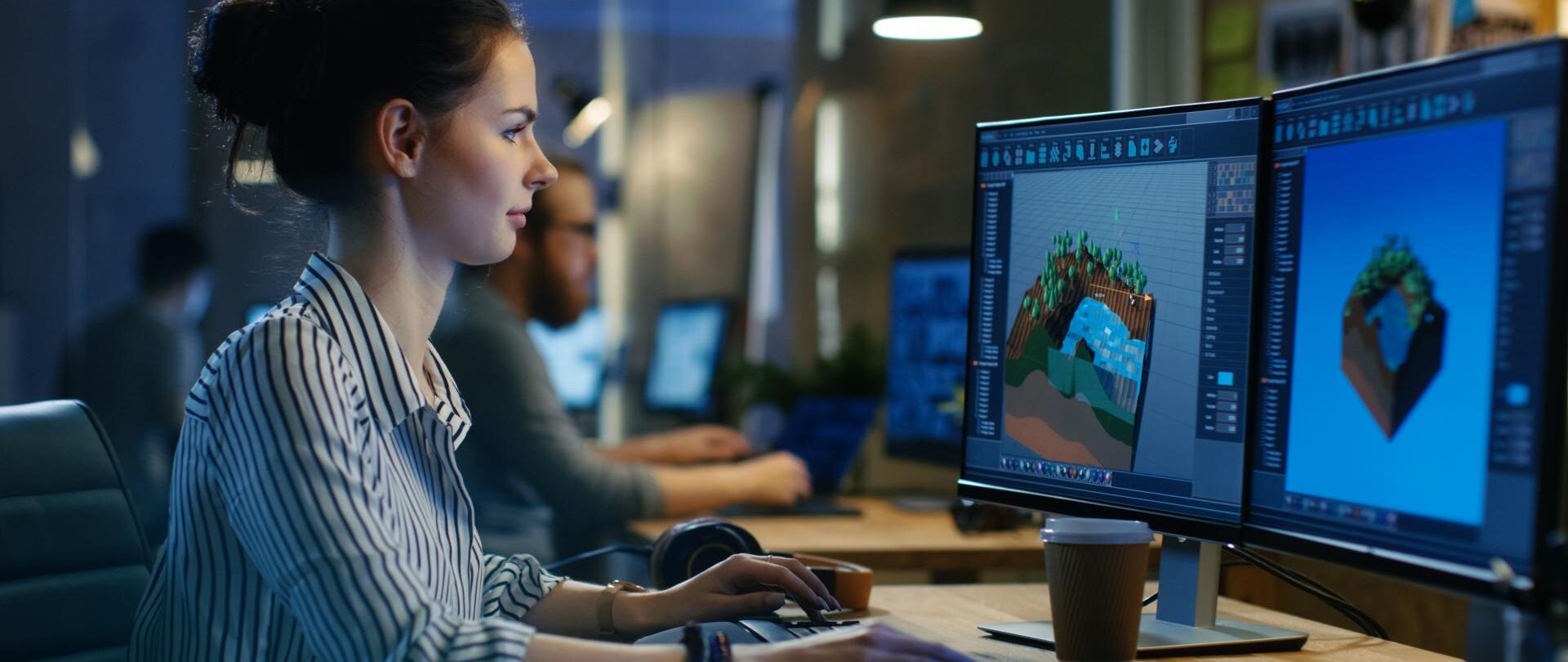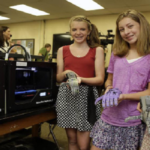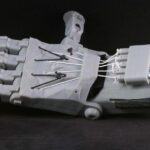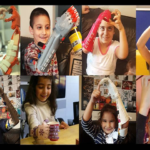
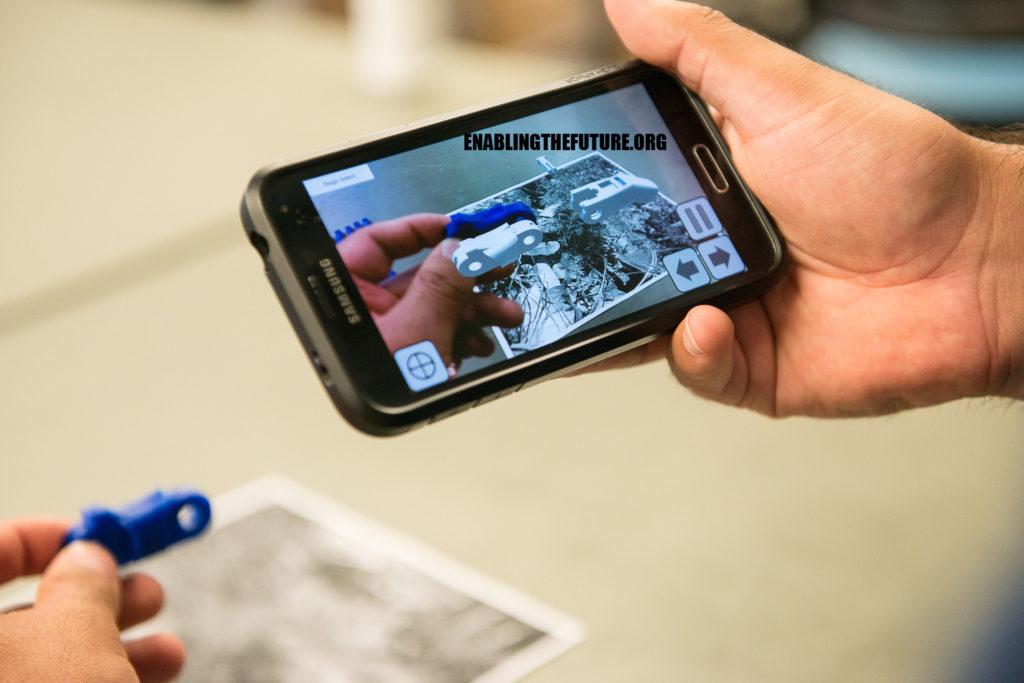
As the e-NABLE community has grown in size, with word spreading around the world and prompting incredibly positive action, we’ve seen thousands of volunteers helping to provide 3D printed prostheses, with both devices and people assisting continuing to grow in numbers. In following all that e-NABLE volunteers do, we’ve been overwhelmed with inspiration, and continually impressed by the variety of hands and arms being made for children who are quite joyous to receive them. What’s been equally impressive, however, is the accelerated evolution of technology being used. e-NABLE engineers/volunteers have been responsible for so many exciting designs and styles that children are drawn to, from the recent Minions-inspired parametric 3D printed prosthetic to Spider-Man and Ironman arms, both made for little boys under the age of five.
You can see how much dedication e-NABLE volunteers express as they make and often deliver these 3D printed prostheses. While the assembly does not look particularly difficult, it’s obvious those assembling parts have to be trained and then must continue to pay attention to a number of details when constructing the hands and arms. Now, in consideration to their volunteers all over the world, e-NABLE has released a video using augmented reality that shows volunteers exactly what to do, just using visuals, in the Augmented Reality Raptor Reloaded Assembly Manual.
This new guide actually functions as an app (currently only available on Android) that you can download quickly and then use in an amazing new capacity offered by augmented reality. Created specifically for the e-NABLE Community by Derek Delizo, a junior in electrical engineering at University of Washington Bothell, along with mentors Rafael Silva and Ivan Owen, users now have a much easier way to learn how to assemble the prostheses on their own.
“AR (augmented reality) and VR (virtual reality) is an eye catching field that has the potential to attract and motivate several people to develop and use this technology. Most of the development we see today is aimed at the gaming industry, but there are several other serious applications that need to be considered,” says Rafael Silva. “The more we use, talk, and think about the noble uses of this technology, the more the industry will invest in evolving this application for something other than video games. It’s important that the general public understand the full potential of these tools and not antagonize it as just another video game thing.”
Silva works for UWB IT as a STEM liaison where he manages the Unix Infra-Structure of CSS Division. He is also involved as the team leader in a research group currently looking into how the use of virtual reality may be able to further improve rehabilitation of impaired upper limb patients.
“It took decades for this technology to evolve to be feasible and available for the general public. We are in an exceptional stage where we can finally push boundaries in many fields, by using this technology,” Silva noted.
Silva points out that the central benefit with both a mobile AR/VR application like this is that the solutions offer a great level of independence to the user, and the solutions are being completely democratized. Costs are cut; accessibility is increased on all levels.
“When I met Ivan and showed him my previous work, our interaction resonated with amazing synergy,” said Silva. “In one of these conversations he brought up the language barriers faced by people trying to assemble the e-NABLE Community designed hands, all around the world; from this conversation the AR Raptor Reloaded Manual project was born.”
That is an obvious benefit in the app, and you can see that when you check out the video below, which demonstrates how easy the AR system is to use. It is simple, free, and completely visual. Discuss further in the Augmented Reality Raptor Assembly Manual over at 3DPB.com.

To start the process, the user just needs to:
- Download the app from Google Play.
- Click on ‘Read More’ with the app.
- Locate the target image URL, download it, and save.
- Open the image on another device, or print it on paper.
- Open the app and then point your smartphone or tablet’s camera directly at the target images, highlighting to identify parts.
- Begin assembling with the help of the AR feature.
Stage selection can be used to watch each step in the process, and you can move back, forward, and even use the vertical swipe rotation for a 360 view. If you move your device closer to the target, you can also get a more magnified view. A pause and play feature is available, as well as highlighting to help you identify parts.
The main goal with this new learning tool that is complex in its features but easy to use is to help volunteers learn how to assemble prostheses in an undeniably fun way. While it’s always great to learn in person, this certainly comes in as a close second and should be extremely useful for the team overall.
“[In} Spring quarter 2016 I was a part of a mixed reality class that taught students how to develop augmented and virtual reality applications,” explains Delizo. “Ivan and Rafael discussed their idea of creating an augmented reality assembly manual. I was interested in their idea and decided to do it as my final project. I wanted to be challenged.”
“It only took a little over two weeks to develop the manual and to complete all the publication steps. Creating the animations was the biggest challenge, as in the class we had only learned how to use blender. When exporting the animations in Blender it wouldn’t combine the individual pieces into one animation. Instead there were 100+ clips that couldn’t be used. My first solution to this problem was to code the animations by hand, and after that didn’t work Ivan suggested to use Maya. I ended up teaching myself Maya and completing the animations in 2 days.”
Ivan Owen, the Makerspace Lab Manager and student mentor at UWB, was obviously right on target in seeing Derek Delizo as a perfect fit for helping to carry out the ‘rough proof of concept’ that he and Silva had already put into motion.
“The passion, drive and effort he brought to the project combined with the excellent ideas and additions he made were incredible,” said Owen. “Additionally, this was quite an achievement as it was the first AR application he has ever developed, so he learned an incredible amount along the way.”
The e-NABLE team is also hoping that with this new AR app, they will reach out even further, expanding their volunteer community around the globe, as well as being able to offer the app to students where they also can use the technology in the classroom settings—certainly something we’ve seen happen before as students have brought great happiness to other kids their age in need of prosthetics, even going so far as to launch programs and challenges in their schools. According to e-NABLE, the ultimate mission in the student setting is to give them the tools to go forth and make a significant, positive impact on society.
The new app/guide is still a work in progress.
“I will be working on some updates to the application that include adding an assembly step for inserting the wire, allowing the back button to step backwards through assemblies and adding the tensioner clip to the wrist assembly,” explains Delizo.
If you are currently using the app, Delizo invites feedback while he continues to refine and update. e-NABLE also requests that users highlight the new guide on social media, using hashtag #enablethefuture on Instagram, Twitter and Facebook. It’s their hope that you will explore its uses-and especially from the classrooms.
[Source / Images: e-NABLE]
If you're looking for affordable 3D visualization services in the USA, our platform provides an ideal solution for all your architectural and real estate needs. Through our service, you can access high-quality 3D renderings at competitive prices without compromising on quality. Whether you need interior visualizations, exterior renderings, or architectural animations, our team ensures that you get professional results that fit within your budget. With our support, you can make your projects visually stunning while saving on costs, all with a quick and straightforward process.
Through our site, you can easily order affordable 3D visualizations for your projects, whether for a residential property, commercial development, or architectural design. We understand the importance of staying within budget, and that's why we offer tailored solutions to ensure you get the best value for your investment. Our experts work efficiently to provide you with realistic, photorealistic 3D images that will elevate your presentations and attract clients, making your property stand out in the market.

